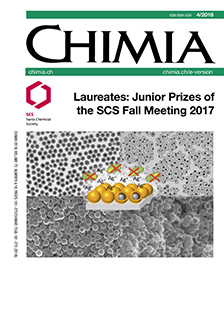Transforming Olefins into Dinucleophiles
DOI:
https://doi.org/10.2533/chimia.2018.212Keywords:
Cross-coupling, Dicarbofunctionalization, Nickel catalysis, TdaeAbstract
Herein we present the first example of a three-component dicarbofunctionalization of olefins under reductive conditions. Our strategy takes advantage of nickel catalysis to add aryl and alkyl groups across the double bond with remarkable selectivity. The reaction shows broad functional group compatibility and more importantly, it proves to be general in terms of the alkenes that can be functionalized compared to previous dicarbofunctionalization methods. Initial control experiments reveal different activation modes for both electrophiles and the involvement of alkyl radicals throughout the reaction.Downloads
Published
2018-04-25
Issue
Section
Scientific Articles
License
Copyright (c) 2018 Swiss Chemical Society

This work is licensed under a Creative Commons Attribution-NonCommercial 4.0 International License.
How to Cite
[1]
Chimia 2018, 72, 212, DOI: 10.2533/chimia.2018.212.







